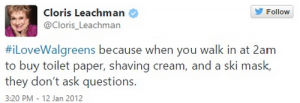Community Involvement in Business: Strengthening Brand Buy-in Both Internally and Externally
Good for You, Your Company and Your Community
Giving to charity and supporting your local community is simply good business. Many manufacturers, large and small routinely engage in activities that provide monetary support, volunteer labor and even their own products, all to move the needle for nonprofit organizations. Our clients have removed graffiti from park benches, pulled a 747 to raise funds and filled school buses with school supplies.

Our Client Technoform Glass Insulation North America raised $1,000 worth of school supplies for Twinsburg Local Schools during their Fill-the-Bus campaign.
If you are considering starting a community involvement program, first get to know your town. Read the local paper, review the chamber of commerce website and scour the social media that surrounds every society. Find the centers of influence in the neighborhood and introduce yourself and your mission to help the community. You will often see many of the same company names routinely popping up in the news and online.
Look for groups such as Rotary chapters and other established service groups – they already are plugged in and know where help is needed. Many business to consumer companies, such as restaurants and retail businesses, find that supporting their school’s community hunger drives and civic events allows them to raise awareness for their brand. Just as important, is the opportunity to put an organization in a good light.

Employees from SSP & AFV removed graffiti on viewing area rails with the Cuyahoga Valley Trail Council.
As a manufacturer with customers all over the globe, you may wonder what added value supporting local community charities has for your business. Supporting local communities gives your business the support of the local community, local government, and the support of residents. Besides business expansion, abatement opportunities and community reinvestment programs, being a good steward provides employees, current and future, with a strong culture of giving back. Every company and I mean EVERY single manufacturer we call a client is searching for quality employees.
From line workers to chemical engineers, they all have one thing in common – they can choose where they work. We know human resource managers Google and social media research potential employees – it’s just the nature of the game. This is especially important with the millennial generation, who have a deep rooted need for social entrepreneurship, and select jobs where they feel they are tackling social issues, and having a positive impact on society. Your potential employees want to work at a company that not only pays a competitive wage, but provides a meaningful and challenging work environment.
Wouldn’t you want to be viewed as the “pay it forward” company? When potential employees surf your company webpage, social media and blog, will they find a company that features fun and giving back or simply a sales message on how great (you think) you are? Both your employees and you have a choice where to work. Use your community involvement to not only highlight your culture, but also to separate your shop from all the rest.
When you do launch your efforts, consider the following checklist:
- Promote through your social media and website to your customers and vendors (which, by the way is just as important as the local community
- Ask employees to engage with company social media and use email to promote the cause
- Make sure you assign a “good” photographer to capture the event
- By all means, have employees in company apparel such as golf or t-shirts and hats
- Consider other visuals such as the “large check” or company banners that emphasis the effort
- Send out a press release in advance to the local media about the program
- Find out if media will be present and introduce your company upon arrival at the event
In the end, giving to charity is both great for the company and the community. Find causes that align with your brand and allow your employees to be involved at every step of the process. A brand is composed more than just the words in your mission and vision statement. Brands are living and breathing organisms, which everyone should buy into. By becoming involved in charity events that exemplify your company’s values, the brand is being strengthened both internally and externally. The employees are acting as living and breathing examples of the company’s values, strengthening their commitment to the organization. This not only allows for further employee buy-in to the brand, but also strengthens the community’s trust in your brand. The benefits to the community will be vast and the impact on your company, well, that’s immeasurable.












